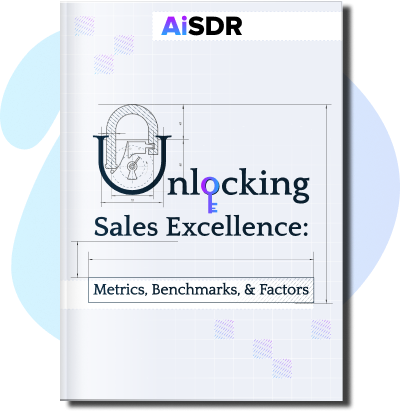The Power of Data: Internal Insights vs External Signs for Successful Personalization

Customers expect personalization. Check out internal and external insights you can use to tailor your messaging
Personalized communication no longer surprises customers — They expect it.
If anything, customers want even more personalization.
Salesforce Research found that of 14,300 consumers surveyed:
- 73% believe that personalization should improve as technology advances
- 74% think it should get better when they share more data
- 64% expect more personalization when they spend more money
But how can you add a personal touch while identifying each prospect’s or customer’s needs?
The answer is using internal insights and external signs.
Internal insights and external signs are just two types of data indicators that you can use when building out message personalization.
Here’s a closer look at each one.
What are internal insights for personalization?
Internal insights refers to customer data such as their behavior, preferences, and interactions with your company. You can extract this data for content personalization from your company’s internal systems, such as a CRM like HubSpot or Salesforce.
Common internal insights include:
- Demographics
- Order history
- Search history
- User surveys
- Email open rates
- Email click-through rates
- Interactions via your app or website
This data can help you learn about your ideal customer’s interests and bolster your team’s approach to personalization. You can also use it to show your leads you get them.
For example, if a user frequently clicks on articles about marketing AI tools, you can tailor content to:
- Drive them to articles on related topics like “Top 10 Marketing AI for Lead Nurturing”
- Suggest tools they might find interesting
- Propose a guide about “What you need to do before buying a marketing AI”
That’s just one potential benefit of using internal data for personalization. As you build a user’s history over time, you can monitor any changes in preferences and interests, which will help you avoid sending irrelevant messages.
There are some limitations to relying solely on internal data:
- You get a narrow perspective of user interests and preferences because all the data you collect is specific to your context. For example, if you sell tourist equipment and you see a customer from Australia planning a winter trip to Norway, you can feed them suggestions about winter shoes instead of tank tops.
- Expanding the scope is difficult because collecting extensive internal data may make customers uncomfortable with the amount of data being shared. It may make them even more discomforted if you try to collect data that has no apparent connection to your services. For instance, if you sell backpacks or travel mugs, people aren’t likely to share their overall travel plans, who they’re traveling with, and where.
- Relying on user interaction data limits the system’s ability to provide relevant recommendations if users are inactive.
- Recommendations can be less diverse when a person is looking for general suggestions. For example, a streaming service like Netflix makes recommendations based on what a user already viewed, which can make selecting a movie challenging if the user if picking a movie for multiple people (and not just themselves).
You can use external signs to help enrich personalization and counter the limitations of internal insights. Even better is if you can delegate tasks like data scraping, enrichment, and personalization to a tool that does it for you.
What are external signs for personalization?
External signs refers to any data collected from third-party sources.
Common sources for external signs include:
- Social media profiles
- Company websites
- Portals
- External surveys
- Google Analytics (or similar data analytics software)
For instance, if you’re selling accounting software, and you see that a new start-up has posted a vacancy on LinkedIn where they’re looking for an accountant, you can use this external sign as the reason for reaching out to the founder.
External signs for personalization enable:
- Rich insight into customer interests beyond your product or service, providing a clearer picture of a prospective customer and their location in the customer journey.
- Greater context about your customers to make content more tailored and relevant.
- Real-time monitoring of current trends and mentions to potentially capitalize on hype or recent events.
- Data-driven recommendations that are powered by larger amounts of data that you wouldn’t normally be able to sift through, which in turn makes recommendations more reliable.
But like internal insights, there are also some drawbacks to external signs:
- Privacy concerns
- Data security
- Data accuracy and reliability
- Need for compliance with third-party software policies
Internal insights vs external signs
Here’s a side-by-side look at internal insights and external signs by characteristic.
| Internal Insights | External Signs | |
| Origin of Data | Collected from user interactions within your platform or system | Collected from external sources beyond your platform, such as social media and other third parties |
| Scope of Information | Narrow, reflecting user behavior and interactions within your company’s system. | Broad, reflecting user activity across different platforms and external sources |
| Accuracy | Highly accurate in the specific context of a user’s interactions with your company’s platform. | Depends on the quality and reliability of external data sources |
| Immediacy | Real-time insights and historical data of user interaction on the platform | Possible slight delay because third parties need to collect and process (anonymize) external data before sharing it with you |
| Reliability | Generally more reliable because you control when, how, and what data to collect | Depends on the trustworthiness of data sources |
| Impact on personalization | Improved personalization experience and strategy based on customer behavior and preferences | Enriched personalization by providing a more comprehensive view of target audience interests and preferences |
| Lead outreach | Helps define buyer persona accurately and apply findings (interests, needs, etc.) to reach new leads | Helps define a lead’s interests and needs from external channels to use them as points of contact, engage the lead, and convert them by offering the right solution |
| User experience Impact | Contributes to a tailored and consistent experience within your company’s platform | Contributes to a rich, diverse user experience |
Balancing internal insights and external signs
Internal and external data are like puzzle pieces. If one piece doesn’t fit, try something else.
For best results, you should use a mix of both types.
Internal data paints a detailed picture of a user within your context, while external signs expand the scene so that you have the full picture. Blended together, you’ll have a powerful combo of data for personalization.
Here are some tips you can use to find the right balance:
- Use only the 3 most recent posts in the last 3-4 months
People change quickly, which means info on social media becomes outdated even quicker. Messages that use old data will also show you aren’t on top of your game.
- Create multiple touchpoints that can show middle or high intent
Not every user action or search result indicates a need. Some people just like browsing websites and catalogs for fun without any intention to buy. To avoid wasting time and effort on low-intent prospects, set up your ecosystem with numerous touchpoints that tell you how interested someone might be in your solution.
- Use A/B testing to fine-tune messaging and content
People respond differently to what you create. Some may like emails that end on questions, while others want a clear call to action. A/B testing allows you to experiment with variations based on real-time user responses to test hypotheses and validate your ideas.
Basically, when combining internal insights and external signs, the main rule is to analyze all available recent information but cherry-pick findings that will be useful to personalize your customers’ experience.
Personalize your outreach using internal and external data
Balancing internal insights and external signs is the best approach to fine-tuning personalization. Separately, internal and external data sources share considerable insight, but they lack the crucial details to hit a personalization home run.
AI marketing and sales solutions like AiSDR automate the process of scraping data from internal and external sources for use in personalized messages. You can pull data from your HubSpot account, use a lead’s recent LinkedIn activity, and even target prospects at companies based on hiring intent.
Book a demo to see how AiSDR uses internal and external data for personalization.
FAQs
What are examples of internal insights that can be used for personalization?
Examples of internal insights for personalization are:
- user preferences
- behavior on your platform or site
- purchase history
- interaction history
What are examples of external signs that can be used for personalization?
Examples of external signs for personalization include:
- social media activity
- third-party data about demographics, purchase histories, online behavior, and so on
- external online reviews
- open-data governmental registries











